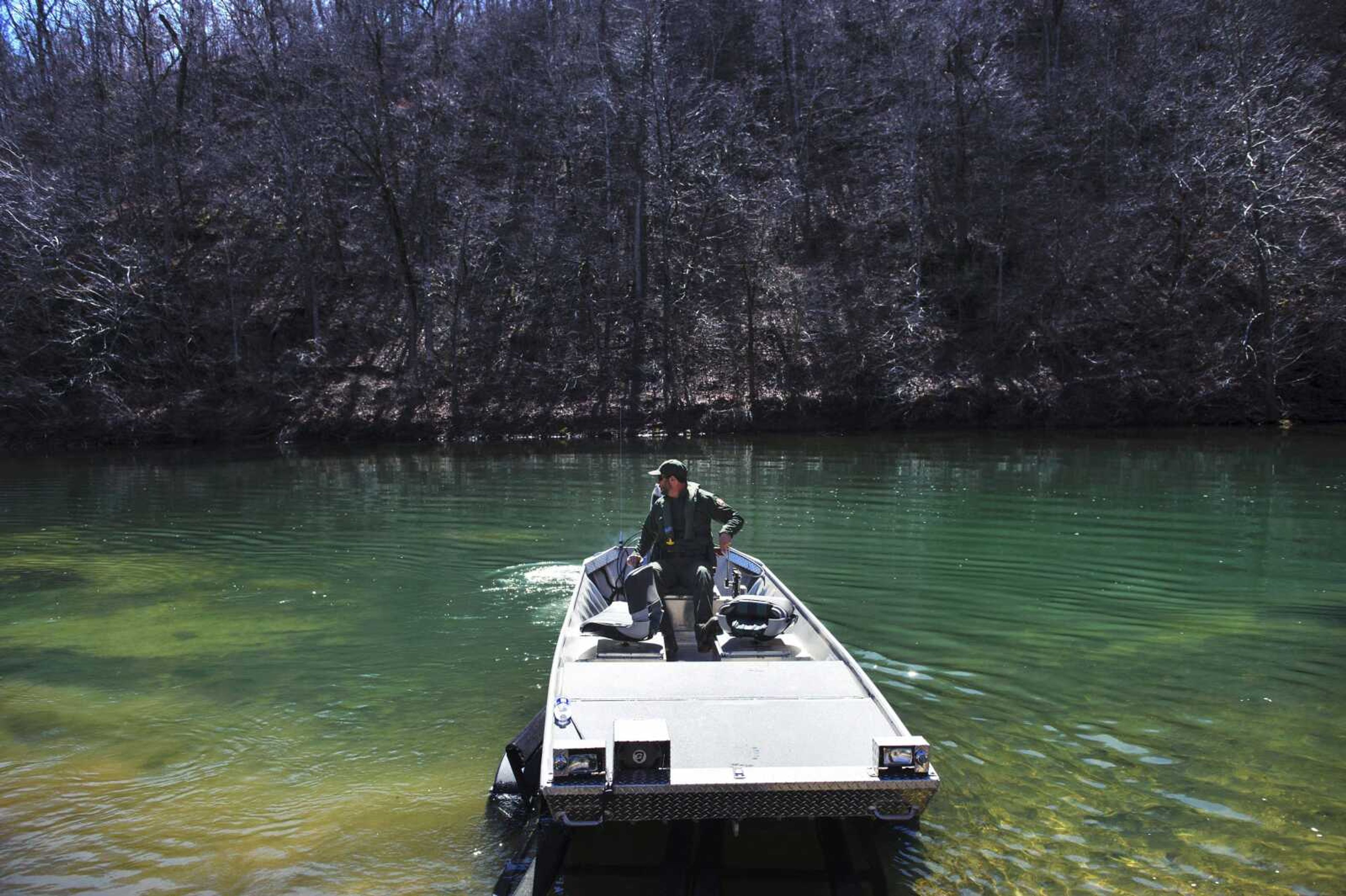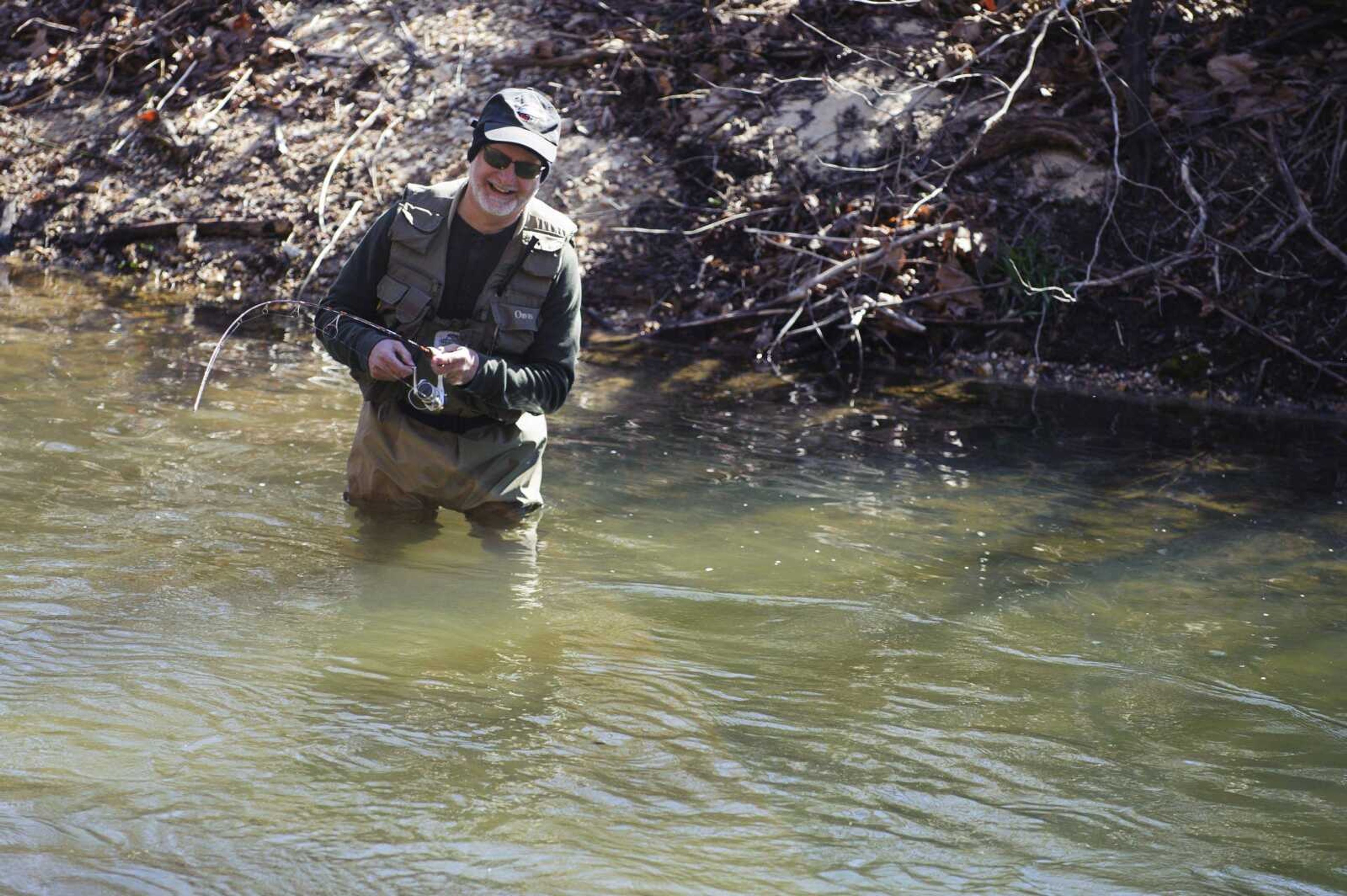Riverways focus of tussle between state, feds
ALLEY SPRING, Mo. -- The business model is pretty simple at Harvey's Alley Spring Canoe Rental. When boats are on the waters of the Ozark National Scenic Riverways, Shane and Kim Van Steenis make money. When the boats are empty, as they were during the October government shutdown, so is the cash register...
ALLEY SPRING, Mo. -- The business model is pretty simple at Harvey's Alley Spring Canoe Rental.
When boats are on the waters of the Ozark National Scenic Riverways, Shane and Kim Van Steenis make money. When the boats are empty, as they were during the October government shutdown, so is the cash register.
"They told me if I rented a canoe or anything like that I would be in violation of my contract," Shane Van Steenis said on a quiet day late last month.
The local politics of the riverways are more complicated, Shane Van Steenis said. He was presiding commissioner of Shannon County in 1992 when he purchased the business from the late Sen. Danny Staples, a Democratic lawmaker from 1977 to 2003. He worked for Staples in Jefferson City and three times ran unsuccessfully for the Missouri House.
Van Steenis understands the resentment toward proposed new rules that has boiled over into calls for the 88,000-acre park to become state property but also knows that is unrealistic. "I know one thing -- the state parks don't want it. The state can't afford it."
Debate

But that question -- whether the state or the federal government should operate the park -- isn't going away. The Missouri House budget plan includes $6 million for the state to operate the park if it receives ownership. U.S. Rep. Jason Smith, R-Salem, filed a bill in Congress to turn the park over to the state at federal expense.
And at 11 a.m. Saturday, Rep. Chris Kelly, a Columbia Democrat who supports federal ownership, and Lt. Gov. Peter Kinder, a Republican who is urging state management, will debate the question at the Shannon County Courthouse in Eminence.
The immediate cause of the controversy is a new management plan, proposed late last year. The National Park Service offered four alternatives, including one with no new restrictions or regulations. As its preferred alternative, the Park Service chose a plan to close 65 miles of unauthorized horse trails, ban motors on some stretches of the rivers and nominate 3,430 acres for designation as wilderness.
A final decision, taking into account 4,000 comments, will be made this summer.
"If your question is, should the Park Service work with the local people on rational regulation, I am absolutely in favor of that," Kelly said. "But that's not what the lieutenant governor or the congressman or the legislation in the House called for. It called for the abolition of the park, and I think it is so fundamentally un-American."
History
Kinder said he will argue that the national riverways designation might have been a good idea in 1964, when Congress authorized the park, but it is time to re-evaluate the decision. "We proudly have an 80-year tradition of one of the strongest departments of conservation in the country and one of the strongest state park systems in the country," he said. "I am offended by the notion that we Missourians must hand this off to the federal government in perpetuity."
The Jacks Fork and Current rivers became the Ozark National Scenic Riverways, the first federally protected rivers, under an act passed by Congress in 1964. The idea for preserving the river corridors, with their numerous large springs and caves, developed over time, beginning with widely publicized float trips in 1909 led by Gov. Herbert Hadley.
Five of the state's 10 largest springs are either in the park or feed one of the two rivers. Big Spring and Round Spring on the Current and Alley Spring on the Jacks Fork became state parks in 1924. After conservationists defeated a plan for a hydroelectric dam on the Current River, political momentum built for more complete protection.
Congress gave the National Park Service $7 million to buy land, conservation and scenery easements. The park, opened officially in 1971, owns 135 miles of the two rivers that meander through countryside in Dent, Carter, Shannon and Texas counties.
"One of the reasons for the national significance is the collection of caves and springs," superintendent Bill Black said. "When you pull everything together, it is quite a package the American public has here."
The park is a major economic engine for four counties that also are among the poorest in the state. Figures published in 2013 by the National Park Service, based on 2011 activity, estimated that the riverways drew 1.4 million visitors.
Black said he has two basic jobs. "I have got to protect the people from the park, and I have to protect the park from the people."
Alternative plan
The preferred alternative is an attempt to do that, Black said. It calls for closing 65 miles of unauthorized horse trails and the creation of 25 miles of additional trails but no stream crossings. Motorboats would be banned on some sections, but regulations would be rewritten to make current practices legal where motorboats are allowed.
To reduce crowding, some river access points would be closed and an equal number of new ones, with better spacing, would be opened. To create jobs, the plan calls for new shuttle contractors for people with nonmotorized boats and guided overnight camping trips.
Each plan offers variation, but all, except the no-action proposal, include new restrictions and more enforcement.
Some things sound simple but are hard to enforce, such as a ban on cliff-jumping. When everyone is having a good time, it is hard to see the harm, park ranger Austin Konkel said. When someone suffers a compound leg fracture, he said, the good time is over.
Other rules, such as closing unauthorized horse trails, are so difficult that the no-action plan doesn't contemplate attempting it. One solitary camper, Duane Swacker, a teacher from Warren County who spent his spring break in the park, said horses are one of his main complaints.
"There are plenty of trails, but no, they have to go to follow the rivers," he said. "They will come through and brush up against your tent. Wherever they want to go, they go."
Alley Spring gushes forth an endless stream of water, averaging 81 million gallons each day with minor variations. The big red mill at the water's edge, built in 1894 to embrace and harness that flow, is a reminder that making a living in the Ozarks has long been a seasonal endeavor.
Populations crashed beginning in the 1930s, and today Shannon and Dent counties have fewer people than 100 years ago. One measure of the park's success is that there are more people in all four counties today than in 1960, the last census before the park was created. The peak season is June, July and August, when the bulk of the visitors, who spent an estimated $65.3 million, create the crowding the park service wants to spread out.
"One thing we need more of is winter visitors," Black said.
There is a different rhythm in the park in winter and early spring. The upper Current is quiet, and an otter can find the solitude needed to sun himself on a log. The only people nearby are a pair of anglers, fly-fishing for trout in the cold water.
Joe Ready and Justin Steffi said they will drive between two and 12 hours from their home in Edmond, Okla., for good fishing waters. They were trying the Current River for the first time on the recommendation of a friend.
They know very little about the ongoing controversies, they said. The possibility that the regulations might change is of little concern, they said. "Pretty much anywhere you go you have to share the water with other recreational opportunities," Steffi said. "It is just one of those things."
------
Information from: Columbia Daily Tribune, http://www.columbiatribune.com
Connect with the Southeast Missourian Newsroom:
For corrections to this story or other insights for the editor, click here. To submit a letter to the editor, click here. To learn about the Southeast Missourian’s AI Policy, click here.











